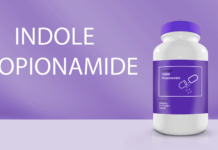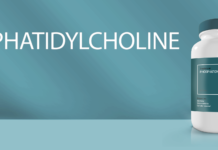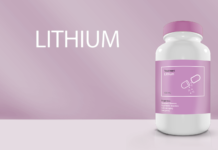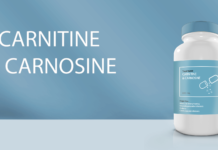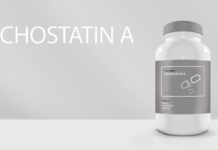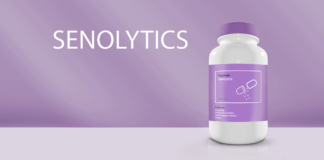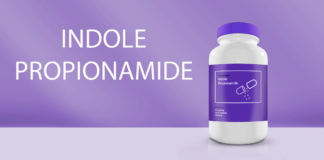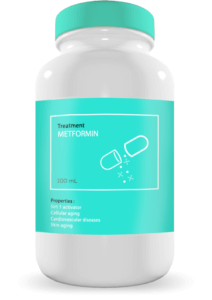
Fact sheet
The first molecule studied in a clinical trial directly targeting aging
Metformin, marketed since 1950 as glucophage, is the most commonly prescribed drug for the treatment of type 2 diabetes. Of all its homologues, it is the anti-hyperglycemic with the fewest side effects[1]. In addition to its proven effects on diabetes, several studies in animals (mice and the small worm C. Elegans) demonstrate anti-aging actions, the mechanism of which is still being studied[2, 3, 4, 5].
Interest in life extension
Following observations of the influence of metformin on increasing life expectancy, researchers have undertaken various studies to identify the mechanisms involved. A study was done on a population of C. elegans, worms having a lifespan of three weeks. The metformin-exposed group had increased life expectancy, but also showed fewer physical signs of aging (height loss, wrinkles) compared to the control group[2, 4].
How can this anti-aging power of metformin be explained?
It would lead to the synthesis of endogenous ROS (Reactive Oxygen Species). ROS are molecules derived from oxygen synthesized by cells under oxidative stress. At high concentrations, they cause serious cellular damage. However, in lesser quantities, these toxins lead to the expression of the PRDX-2 gene which codes for the manufacture of an enzyme, Peroxiredoxin 2, which participates in cell repair and resistance to oxidative stress.
Thus, Peroxiredoxin 2 repairs lesions caused by ROS, but also leads to the suppression of previous lesions. This is the principle of mitohormesis[4]. These same anti-aging properties were also observed by a team from the NIA (National Institute of Aging) in mice[3, 5]: the increase in mouse life span ranged between 4.15% and 5.83% depending on the lines (while an overdose of metformin led to a reduction in life expectancy of 14.4%)[3, 5].
PRDX-2 is a gene that has mutated very little during evolution. As a result, we find this gene in the genomes of many species. We can therefore imagine that in the presence of metformin, the same mechanism occurs in a human cell. In the coming months, a phase 4 clinical study will attempt to explore the same phenomenon of increased life expectancy in humans[6].
- Number of clinical studies: 1936[6]
- Molecule available: on prescription
- Route: oral
- Anti-aging dosage: 425 to 1700 mg/day[7]
Anti-diabetic: Metformin treats type 2 diabetes by inhibiting the mitochondrial respiratory chain at complex 1[8]. This would result in a decrease in ATP/AMP concentration which would result in activation of AMPK which, in turn, would inhibit hepatic glycogenesis. At the same time, metformin would lead to an increase in insulin sensitivity and the use of peripheral glucose[8].
Treatment of obesity: Due to its hypoglycemic effect, weight loss can be observed during metformin treatment. According to a German study, metformin could make someone lose 5.8 kg on average over six months[9].
Anti-tumor : Metformin, by triggering a depletion in ATP, activates the AMPK an anti-tumor kinase[10] leading to the inhibition of mTOR, regulator of protein synthesis and cell proliferation. AMPK may also regulate the expression and phosphorylation of the tumour suppressor protein p53. However, further studies are still needed to evaluate the full anti-tumor potential of metformin[10].
Other effects: Neuroprotective[11], cardiovascular protector[12]…
Precautions for use of metformin
Renal insufficiency and lactic acidosis: When too much metformin is ingested, it can lead to severe intoxication (lactic acidosis), and sometimes even death. The risk is higher if the subject has kidney failure[13].
Gastrointestinal disorders: Metformin may cause gastrointestinal disorders (nausea, vomiting, diarrhea…)[14].
Drug and food interactions: Metformin should be taken with great caution and should never be taken without medical advice. Indeed, there are more than fourteen molecules on the market that can interact directly with metformin. Examples include oihexol, iopamidole, diatrizoate, or iodamide. Metformin should never be consumed at the same time as alcohol[15].
[1] Rojas, L. and Gomes, M. Metformin: an old but still the best treatment for type 2 diabetes. Diabetology & Metabolic Syndrome, 2013, 5(1), p.6.
[2] Anisimov VN et al. Metformin slows down aging and extends life span of female SHR mice. Cell Cycle. 2008 Sep 1;7(17):2769-73
[3] Cabreiro F et al. Metformin retards aging in C. elegans by altering microbial folate and methionine metabolism. Cell. 2013 Mar 28;153(1):228-39
[4] De Haes, W. et al. Metformin promotes lifespan through mitohormesis via the peroxiredoxin PRDX-2. Proceedings of the National Academy of Sciences, 2014, 111(24), pp.E2501-E2509
[5] Martin-Montalvo A.et al. Metformin improves healthspan and lifespan in mice. Nat Commun. 2013;4:2192
[6]
[7]
[8] Viollet, B. et al. Cellular and molecular mechanisms of metformin: an overview. Clinical Science, 2012, 122(6), pp.253-270
[9] Seifarth, C., Schehler, B. and Schneider, H. Effectiveness of Metformin on Weight Loss in Non-Diabetic Individuals with Obesity. Experimental and Clinical Endocrinology & Diabetes, 2012, 121(01), pp.27-31
[10] Loubière, C., Dirat, B., Tanti, J. and Bost, F. Metformine et cancer : de nouvelles perspectives pour un ancien médicament. Annales d’Endocrinologie, 2013, 74(2), pp.130-136
[11] Chung, M. et al. The neuroprotective role of metformin in advanced glycation end product treated human neural stem cells is AMPK-dependent. Biochimica et Biophysica Acta (BBA) – Molecular Basis of Disease, 2015, 1852(5), pp.720-731
[12] Libby, P. Metformin and vascular protection: a cardiologist’s view. Diabetes & Metabolism, 2003, 29(4), pp.6S117-6S120
[13] Lalau, J., Mourlhon, C., Bergeret, A. and Lacroix, C. Consequences of metformin intoxication. Diabetes Care, 1998, 21(11), pp.2036-2037
[14] http://sideeffects.embl.de/drugs/4091/
[15] https://www.drugs.com/drug-interactions/metformin-index.html?filter=3&generic_only=
Dr. Marion Tible

Author/Reviewer
Auteure/Relectrice
Marion Tible has a PhD in cellular biology and physiopathology. Formerly a researcher in thematics varying from cardiology to neurodegenerative diseases, she is now part of Long Long Life team and is involved in scientific writing and anti-aging research.
More about the Long Long Life team
Marion Tible est docteur en biologie cellulaire et physiopathologie. Ancienne chercheuse dans des thématiques oscillant de la cardiologie aux maladies neurodégénératives, elle est aujourd’hui impliquée au sein de Long Long Life pour la rédaction scientifique et la recherche contre le vieillissement.
En savoir plus sur l’équipe de Long Long Life



